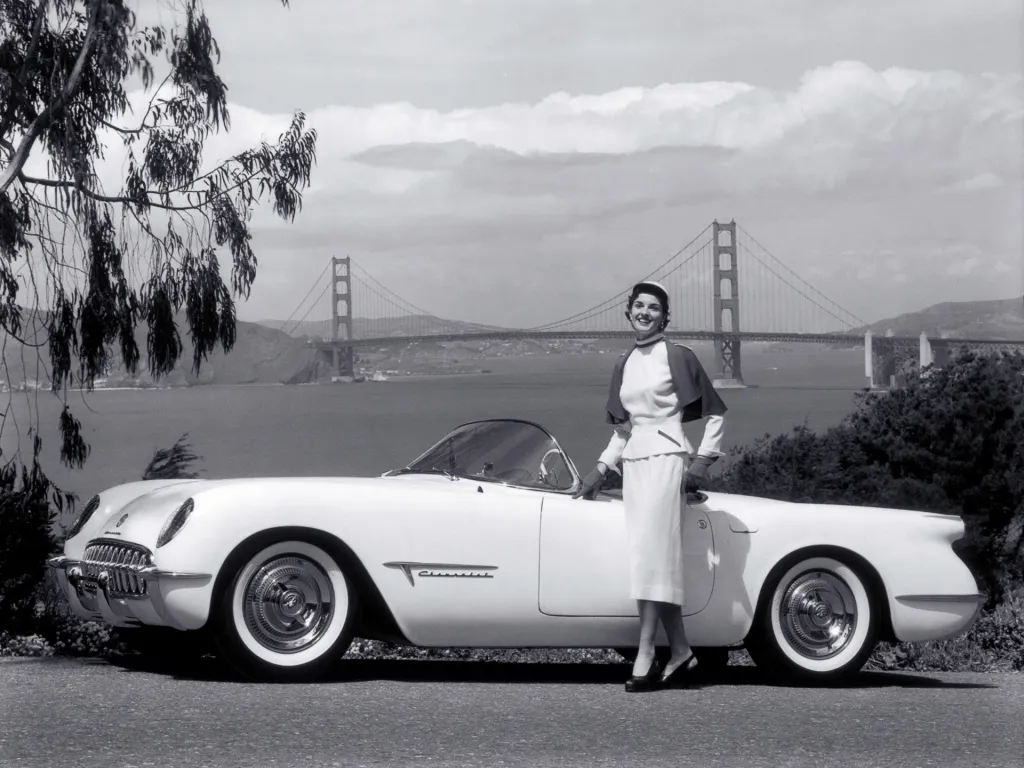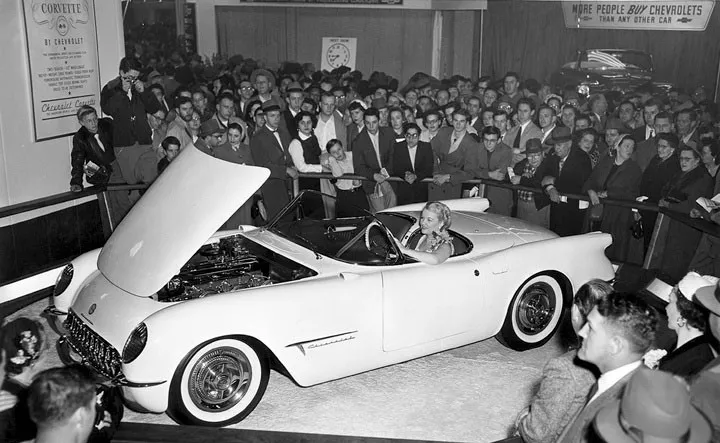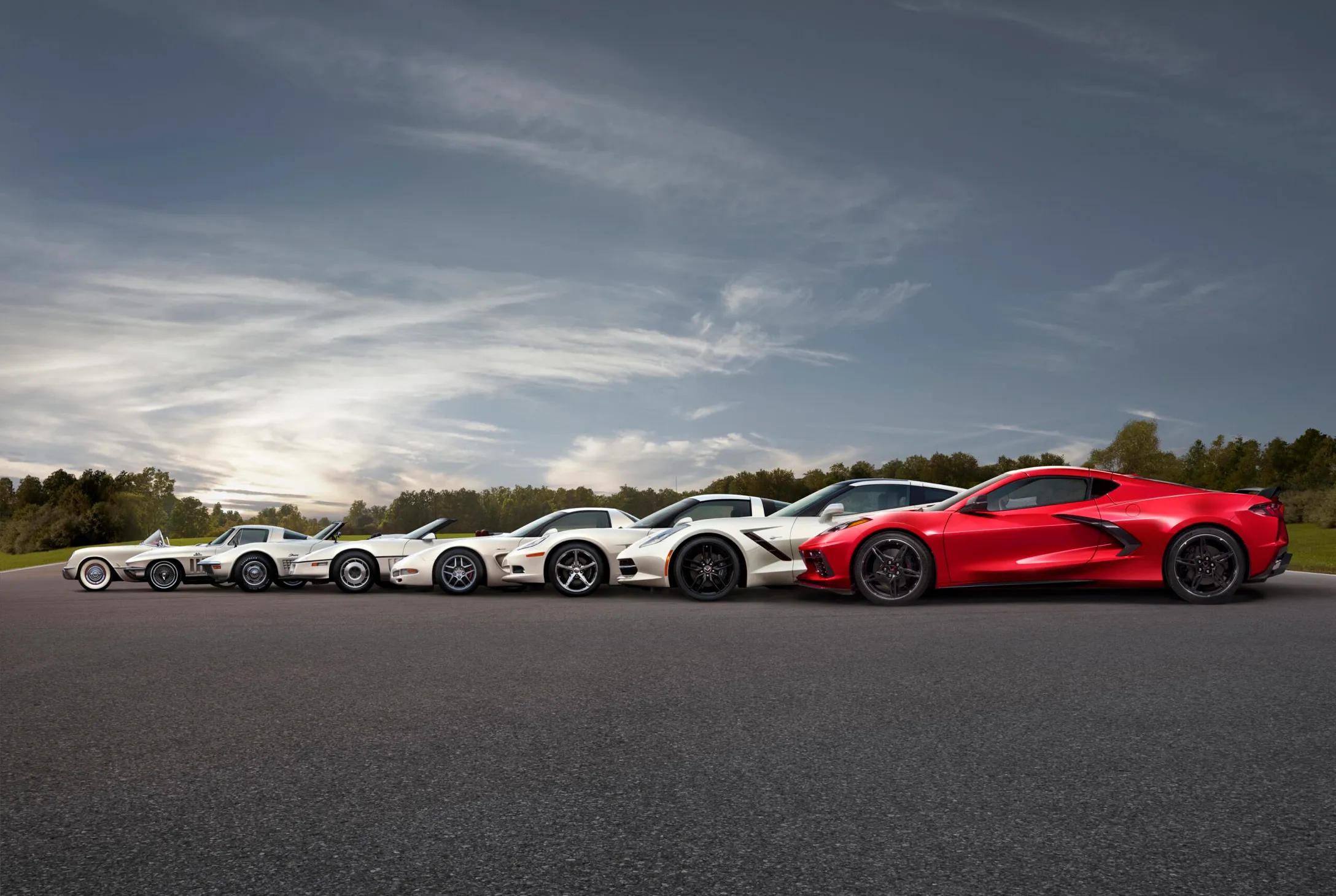

Do you know sports cars that have been produced continuously over several decades, respecting the initial concept, successive generations and countless improvements? In this spirit, you will certainly mention the Porsche 911, released in 1963, or the Ford Mustang (1964) and Chevrolet Camaro (1966), but they all give back at least ten years to the reign of the oldest American sports car. Indeed, designed by the famous Harley J. Earl and taking its name from a type of military ship, the Corvette entered the scene in 1953 and has not left it since! In 2023, the Corvette celebrates its 70th birthday and offers us the opportunity to look back on its history.

In the early 1950s, the vice president and design boss of General Motors (GM), Harley J. Earl, observed a trend emerging in the US automotive world. The proliferation on American roads of English roadsters such as the Jaguar XK120 and MG and the development of competitions and other club races are clear signs of a growing craze for small sports cars. Based on this observation, Harley J. Earl plans to study a cheap roadster, at a price that is contained around $1,850 (around $23,000 in 2023). The idea immediately appealed. Named “Opel” to deceive the competition, the project led by a small team remains secret. Some parameters are modelled on the Jaguar XK 120 chassis, and existing parts are recycled to reduce costs.
However, the engine is a problem. The old Chevrolet 6-cylinder in-line only delivers 115 hp. The assembly of 3 carburettors makes it possible to extract 152, just enough to obtain the desired level of performance... In any case, development is progressing well and it is decided to make the body out of fibreglass, a material synonymous with modernity. This technique also makes it possible to avoid costly investments in stamping tools. Scheduled for the end of 1952, the first prototype was completed in time for the General Motors Motorama in New York in January 1953. The Corvette aroused sufficient interest to make it possible to decide to launch a small production that began on June 30. A first series of 300 cars is assembled almost manually during the summer, all identical and in Polo White with a red interior.

These 1953 model year Corvettes (the change of vintage in the United States occurs at the turn of August and September each year) are then offered by Chevrolet at the final price of around $3500, i.e. a price much higher than expected.
At the end of summer, the Corvette vintage 54 had a varied color palette and new options, but sales were struggling to take off and did not confirm the hopes placed by GM in its new sports car. The reason for this lies mainly in performances that are considered insufficient. The engine is notably lacking in temperament and is associated with the sad Duoglide 2-speed automatic gearbox, which finally suffocates it by its slowness... As a result, 3640 copies were produced, of which only 2/3 found buyers instead of the 10,000 envisaged. A reaction is needed!
The miracle solution was found for the 55 model year with the optional adoption of the new 265 Ci or 4.3 l Chevrolet “Small-Block” V8, which is much more lively and powerful. Combined with the manual gearbox, which is also optional, the Corvette's temperament is transfigured and finally meets customer expectations. It was time to react because Ford has just launched its Thunderbird offering a much better presentation and comfort, and above all, a V8 in series!
Nevertheless, 1955 was a year of transition in terms of sales, as it was necessary to dispose of the unsold items from 1954 and production was limited to 700 copies, 99% of which were V8s. However, the Corvette is on the right track and thanks to the continuous improvement work carried out by Zora Arkus-Duntov, the program's chief engineer, sales will take off with the Model 56, which also benefits from a redesigned body. In the end, 69,000 copies of this first generation of Corvette, known as C1, were produced until 1962, when it was replaced by the next generation C2.
Today, we are in the 8th generation of Corvette, still faithful to the initial concept of a 2-seater sports car available in a convertible version. The Corvette is also the only car of its type in American series production.
In total, 1.8 million copies were produced, half of which are still in circulation. An unequalled success!

The safety of your exceptional car is one of the foundations of Carsup. Our concierge services have been designed to offer a very high level of protection. Multiple cameras, controlled accesses, name badges, secure gates, and the regular presence of our Area Managers: these are all elements that guarantee total peace of mind when your car is stored. But because the trust you place in us does not exclude more control, we are now deploying a complementary security system: Guardian Tracker.
Does destiny exist? A vast, almost philosophical question that engineers and Maserati enthusiasts would unhesitatingly answer in the affirmative. Founded in 1914 in Bologna by the Maserati family, the brand went from a simple mechanical workshop working on Isotta-Fraschini to a real competition department in a few years. In 1926, the Type 26 was born, the first homemade creation and the first to feature the Trident inspired by the Neptune Fountain in Bologna.
There is always that little hesitation when preparing for a trip. The desire to take your exceptional car, to enjoy every kilometer, to make the road an integral part of the experience... and, at the same time, the constraints. The logistics, the risks, the uncertainty of arriving serene. Too often, we give up, leaving our car where it is, sheltered but immobile. This is exactly where Carsup is changing the situation. Travelling in your car should never be a cause for concern, but a simple and smooth pleasure.
Didn't find the answer you were looking for?
Contact us, and an expert will respond promptly.